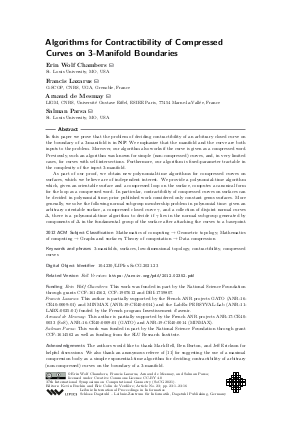LIPIcs.SoCG.2021.23.pdf
- Filesize: 0.75 MB
- 16 pages

 Creative Commons Attribution 4.0 International license
Creative Commons Attribution 4.0 International license



































Feedback for Dagstuhl Publishing